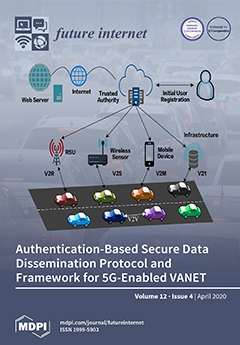Android malware has become the topmost threat for the ubiquitous and useful Android ecosystem. Multiple solutions leveraging big data and machine-learning capabilities to detect Android malware are being constantly developed. Too often, these solutions are either limited to research output or remain isolated
[...] Read more.
Android malware has become the topmost threat for the ubiquitous and useful Android ecosystem. Multiple solutions leveraging big data and machine-learning capabilities to detect Android malware are being constantly developed. Too often, these solutions are either limited to research output or remain isolated and incapable of reaching end users or malware researchers. An earlier work named
PACE (Platform for Android Malware Classification and Performance Evaluation), was introduced as a unified solution to offer open and easy implementation access to several machine-learning-based Android malware detection techniques, that makes most of the research reproducible in this domain. The benefits of
PACE are offered through three interfaces: Representational State Transfer (REST) Application Programming Interface (API), Web Interface, and Android Debug Bridge (ADB) interface. These multiple interfaces enable users with different expertise such as IT administrators, security practitioners, malware researchers, etc. to use their offered services. In this paper, we propose
PACER (Platform for Android Malware Classification, Performance Evaluation, and Threat Reporting), which extends
PACE by adding threat intelligence and reporting functionality for the end-user device through the ADB interface. A prototype of the proposed platform is introduced, and our vision is that it will help malware analysts and end users to tackle challenges and reduce the amount of manual work.
Full article





